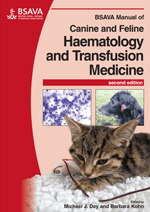
Full text loading...

This chapter considers disorders in which persistent inflammatory or infectious disease is associated with functionally defective peripheral blood leucocytes. Such leucocyte function disorders may be divided into those that are acquired in adult animals and congenital diseases of younger animals that are likely to have an inherited basis. The former are relatively more common than congenital function defects which are rarely encountered in small animals. This chapter covers tests of leucocyte function; assessment of cytotoxic function; acquired defects of leucocyte function; congenital leucocyte function disorders; diagnostic approach to suspected leucocyte function disorders; therapy for leucocyte function disorders.
Disorders of leucocyte function, Page 1 of 1
< Previous page | Next page > /docserver/preview/fulltext/10.22233/9781905319732/9781905319732.13-1.gif

Full text loading...




